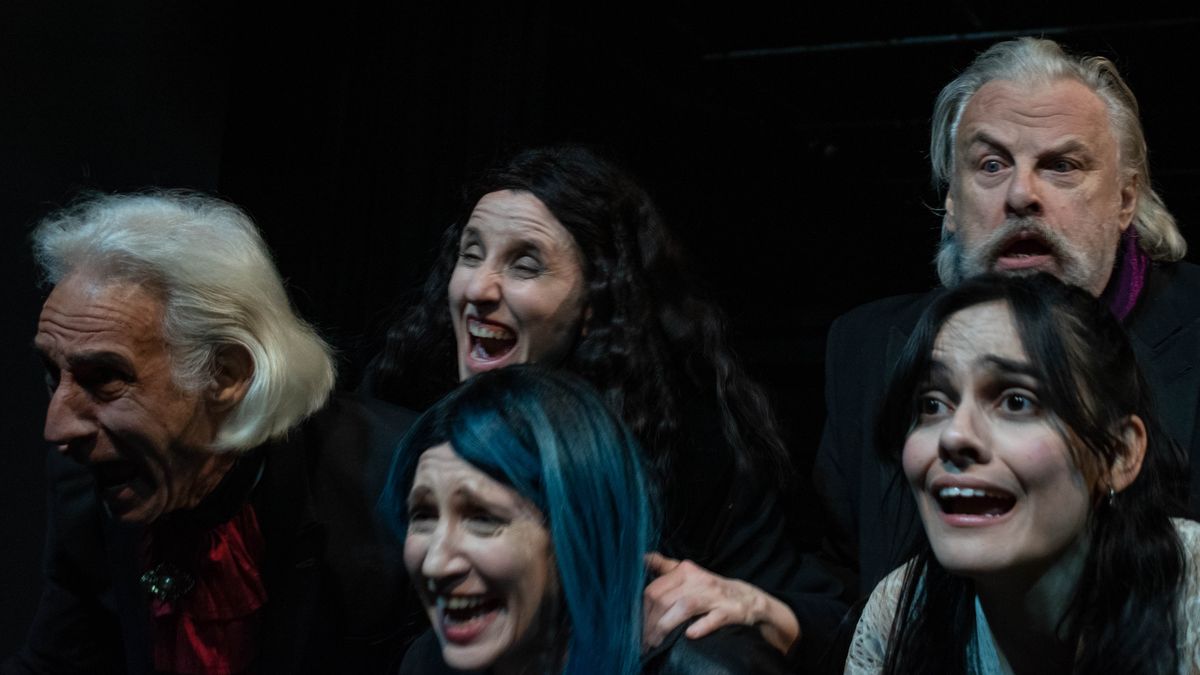“Class B cinema, although historically considered less in prestige, was always fascinating and addictive. His ability to mix the grotesque with the poetic, the terrifying with the aesthetically attract says Diego Cosinwho premieres “It does as if you understood”, With dramaturgy of Hisham el Naggar that passes in a luxurious house in a private neighborhood. There five people gather to do a creative job around the work of Edgar Allan Poe.
The play debuts on Saturday at 9:30 p.m. at the Payro Theater, San Martín 766, and has performances by Jorge José Schwanek, Fernanda Sforza, Carolina Ghio, Pilar Suárez, Ariel Ragusa and Leonardo Nachman. We talked with Cosin.
Journalist: How did you give with this text by the Egyptian author?
Diego Cosin: I met him in 2001/2002 when I directed his work with Mr. Lenin. Since then I worked on several of his pieces and united us a creative collaboration and great friendship. This work was an unpublished text that was after his death in 2013 and together with his brother Ossama, we decided to give life and release it, maintaining his voice and vision, but taking it to the stage with our own pulse.
Q.: How do you print from the artistic areas the suspense and aesthetic climate of Roger Corman?
DC: During the 60s and 70s, I saw several corresponding films based on their stories, starring actors such as Vincent Price and Boris Karloff. The aesthetics of these films, such as the mask of red death, has always fascinated me. Corman was a pioneer in adapting Poe’s stories, creating a unique cinematographic legacy that combines melodrama, psychological horror and visual stylization. This reference to class B cinema, although historically considered less in prestige, was always fascinating and addictive. His ability to mix the grotesque with the poetic, the terrifying with the aesthetically attractive, allowed us to transfer to the theater a universe where imagination, tension and black humor coexist in the same space.
Q.: Are there winks to Edgar Allan Poe? What stories appear? How are they linked?
DC: The work is an intelligent and playful tribute to Edgar Allan Poe. There is reference to stories such as the Red Death Mask, which generates a background of fear and fatality; The heart of the breach, where guilt and obsession go through the characters; and the barrel of crowd, which translates into intrigues and manipulations of power. Hop-Frog’s revenge is reflected in Edgar’s mysterious character, blurring the boundaries between reality and fiction. Poems such as Annabel Lee contribute a melancholic and romantic tone that is intertwined with the daily life of the characters, building a fabric where the literary, the social and the psychological dialogue constantly, combining black humor, tension and reflection.
Q.: What topics addresses the work?
DC: The work explores how paranoia and delirium can arise even in spaces that seem safe or privileged, revealing hidden tensions under the surface of everyday life. It examines interpersonal rivalry and conflicts, showing how desires, jealousy and ambitions deform human relations. In turn, he plays with the border between fiction and reality, questioning the power of imagination and writing as forces capable of building, distorting or even subverting the world in which we live. In parallel, it makes a scathing criticism of the privilege, to the power and the way we perceive reality, combining black humor and social satire to link universal tensions with the local idiosyncrasy Argentina. The work also reflects on the memory, friendship and transmission of the creative legacy, recognizing the author’s word as a space for constant dialogue with the work of Edgar Allan Poe and the literary tradition of suspense and the Gothic.
Q.: How do you see theater and culture today?
DC: Despite the economic situation and the restrictions that affect culture, the theater remains a resistance space. Artists who do not shrink before obstacles, a public who continues to attend alternative rooms and works that explore deep and varied themes show that the independent scene is alive.
Source: Ambito
I am an author and journalist who has worked in the entertainment industry for over a decade. I currently work as a news editor at a major news website, and my focus is on covering the latest trends in entertainment. I also write occasional pieces for other outlets, and have authored two books about the entertainment industry.




